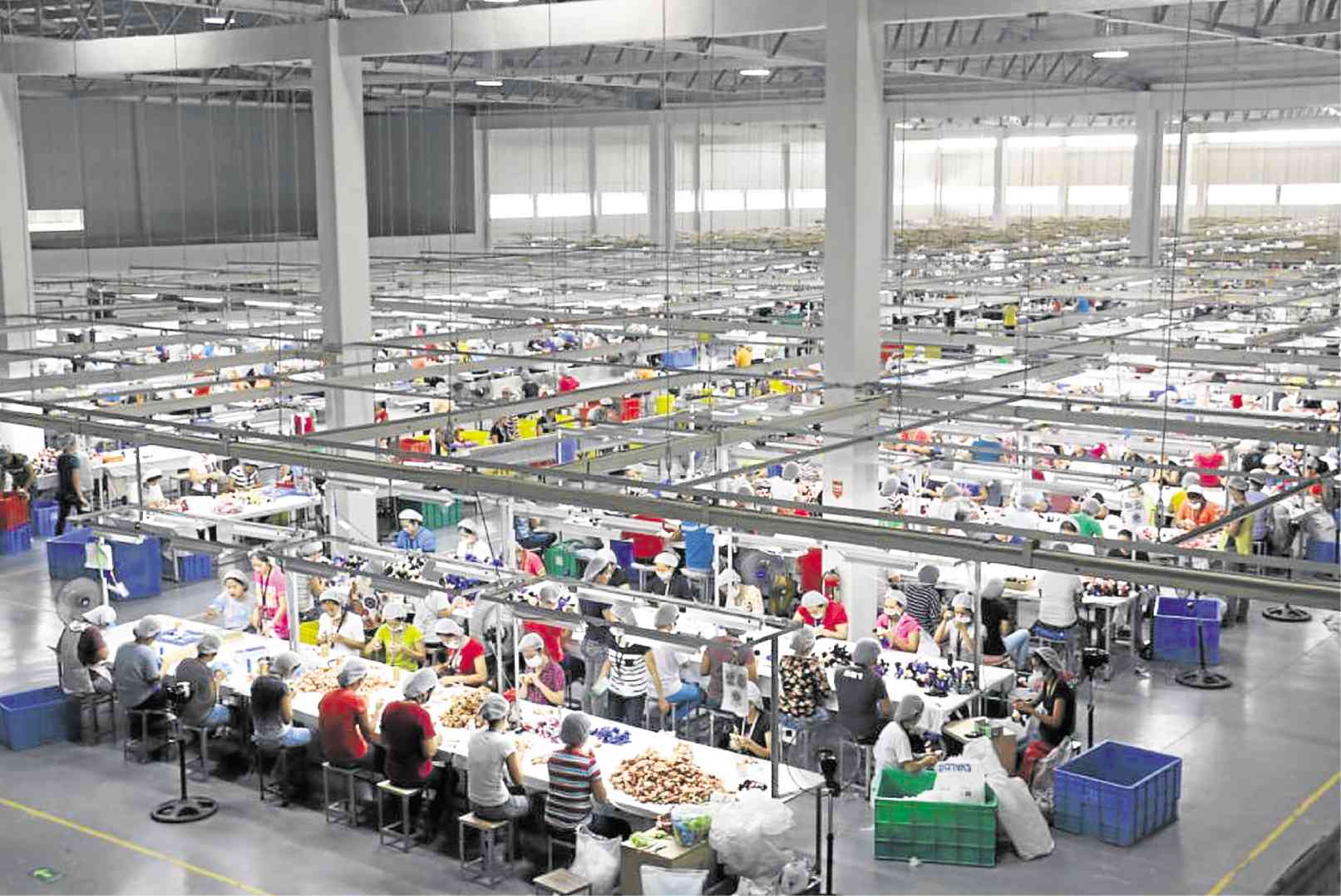
FILE – ASSEMBLY line in a light manufacturing facility at Philexcel
The country’s chief economist sees faster economic expansion in the second half even as manufacturing output slowed during the third quarter partly due to a weak peso.
“I think it would be a better second half. There will be more spending, and agriculture is also improving. Exports are improving. The global economic outlook is better than expected so there are many tailwinds that could drive higher performance,” Socioeconomic Planning Secretary Ernesto M. Pernia told reporters on the sidelines of the opening ceremony of the 28th National Statistics Month Monday.
During the first half, the gross domestic product (GDP) grew by an average of nearly 6.5 percent, or at the lower end of the 6.5-7.5 percent full-year growth target for 2017.
In a Sept. 28 report, economic managers belonging to the Development Budget Coordination Committee said at least 6.5-percent GDP growth in 2017 was “well within the reach of government.”
Pernia, however, did not comment on the third-quarter performance, citing incomplete government data on economic indicators so far.
In a report Monday, global research firm IHS Markit said that while the Nikkei Philippines Manufacturing Purchasing Managers’ Index (PMI) inched up to 50.8 in September, it reflected “continued subdued growth of the manufacturing economy” for the second straight month.
The September PMI score was an improvement of August’s 50.6, which was the lowest reading since September last year.
While last month’s PMI was still above 50, which indicated an overall increase in manufacturing activity, IHS Markit Bernard Aw said in a statement that “the Philippines manufacturing economy ended the third quarter on a weak note.”
“The survey data pointed to further slowing in output growth and a modest sales trend while employment shrank again as firms indicated sufficient manpower to meet production demands,” Aw said.
Also, “the weak peso continued to pose a problem for manufacturers” as “not only did the cheaper currency fail to provide a boost to exports [but also] raised the costs of imports,” Aw added.
The peso started its slide to the 50:$1 level in mid-June, hitting 11-year lows of 51:$1 during the third quarter.
“Coupled with supply shortages due to bad weather, costs for manufacturing inputs, especially in industrial metal and paper, increased further. There were also reports of rising cost inflation affecting production levels” in September, according to Aw.